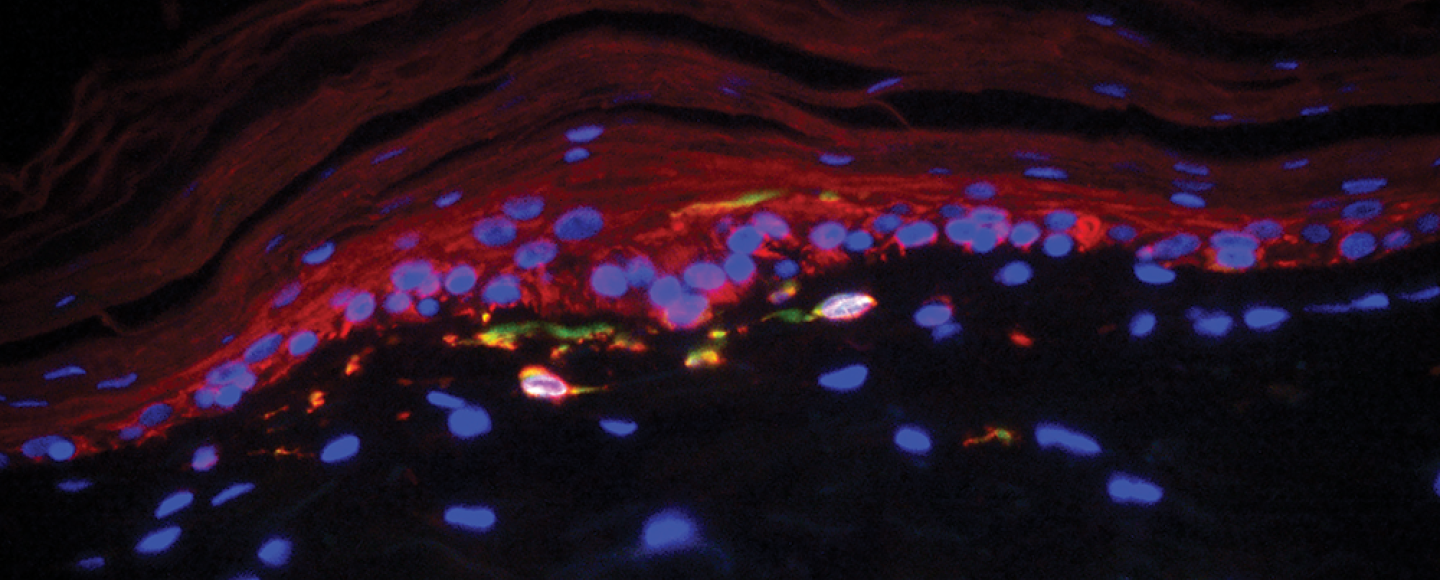Table of ContentsClose

It’s widely accepted that the primary route for person-to-person transmission of the Ebola virus is through contact with bodily fluids from an infected individual. But outbreaks such as the 2013-2016 Ebola epidemic in West Africa showed that the virus also is found on infected individuals’ skin surface. Although evidence suggests that Ebola can be passed on from skin contact with a person in the later stages of the disease, little is known about how the virus makes it way to the skin surface.
Carver College of Medicine researchers, along with colleagues at Texas Biomedical Research Institute and Boston University, traced a cellular route used by the Ebola virus to traverse inner and outer layers of skin and emerge onto the skin’s surface.
The Iowa research team, led by Wendy Maury, PhD, professor in the Department of Microbiology and Immunology, and Kelly Messingham, PhD, research professor in the Department of Dermatology, developed a new approach to examine which cells within the skin are infected by Ebola. They created a human skin explant system using full-thickness biopsies from healthy individuals that contained epidermal and dermal layers of skin.
To see how the Ebola moves through skin, the explants were placed with the dermal side down in culture media. Ebola virus particles were added to the media so that they entered the skin from the underside. The researchers used virus-tracing and cell-tagging techniques to follow Ebola to the upper surface of the skin, identifying which cells were infected over time.
The team found that Ebola infected several different cell types in the skin explants, including macrophages, endothelial cells, fibroblasts, and keratinocytes. While some of these cell types are also found to be infected by the virus in other organs, keratinocytes, which are unique to the skin, had not been previously appreciated to support Ebola infection.
In this confocal micrograph, the Ebola virus (in green) is shown close to the epidermal (red) layer of a human skin explant. Interestingly, virus replication was more robust in the epidermal layer than the dermal layer on a per gram basis. Also, the researchers report that the infectious virus was detected on the epidermal surface within three days, indicating that the virus spreads rapidly through explants to the skin’s surface.
